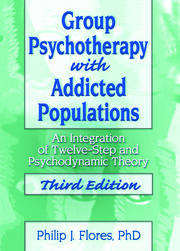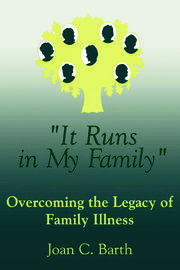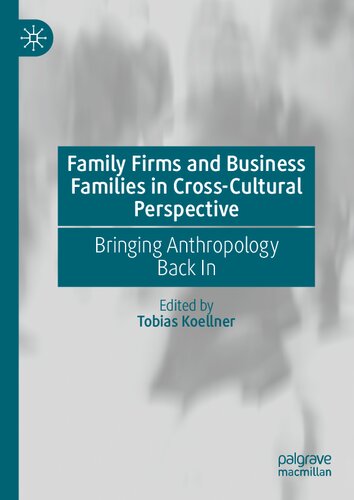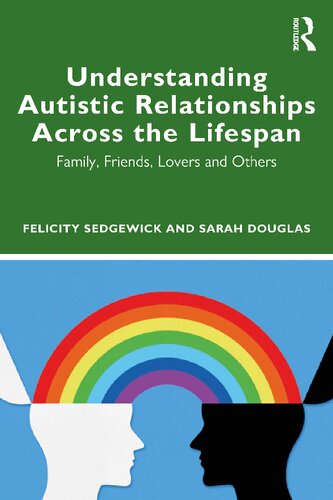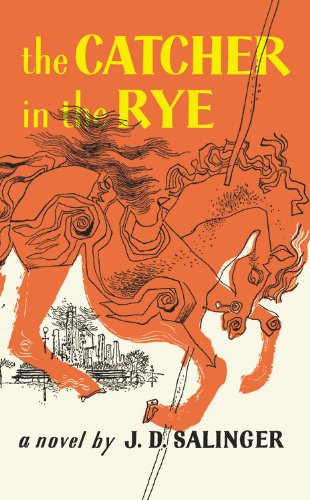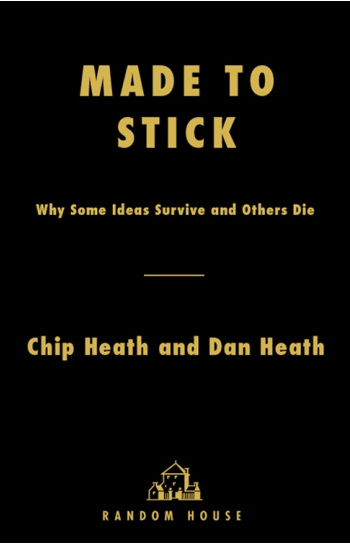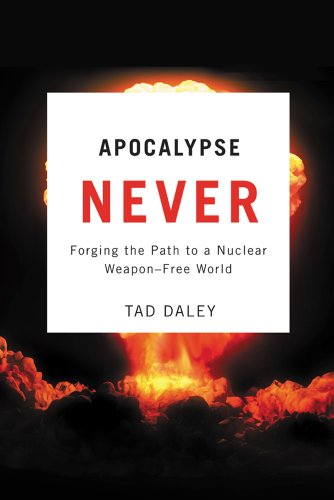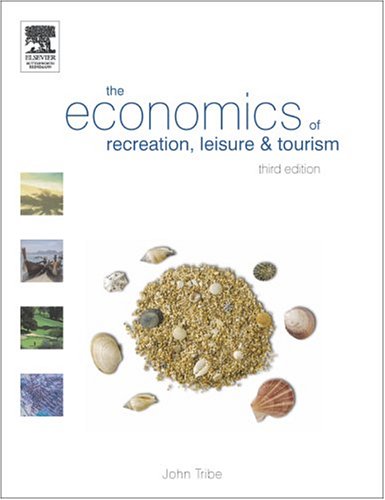موضوعات
آموزش و پرورش
ادبیات و زبان
پزشکی، دندانپزشکی و داروسازی
تاریخ و جغرافیا
داستان و رمان
دیگر
دین و فلسفه
روانشناسی
ریاضیات و آمار
سلامتی، تناسب اندام و رژیم غذایی
شیمی و پلیمر
علوم اجتماعی و حقوق
علوم زیستی و بیوتکنولوژی
فیزیک و نجوم
کامپیوتر و اینترنت
کتابهای کودکان و داستان
کسب و کار و اقتصاد
کشاورزی و دامپزشکی و غذا
معماری
مهندسی و فناوری
هنر و تئاتر
محصولات
Group Psychotherapy with Addicted Populations - Original PDF
نویسندگان: خلاصه: ABSTRACT Be more effective in group therapy with addicted clients Group Psychotherapy with Addicted Populations: An Integration of Twelve-Step and Psychodynamic Theory, Third Edition is the newly revised edition of the classic text, that provides you with proven strategies for defeating alcohol and drug addiction through group psychotherapy. Philip J. Flores, a highly regarded expert in the treatment of alcoholism and in group psychotherapy brings together practical applications of 12-step programs and psychodynamic groups. This updated book explores the latest in constructive benefits of group therapy to chemically dependent individuals, providing opportunities to share and identify with others who are going through similar problems, to understand their own attitudes about addiction by confronting similar attitudes in others, and to learn to communicate their needs and feelings more directly. Topics in Group Psychotherapy with Addicted Populations: An Integration of Twelve-Step and Psychodynamic Theory, Third Edition include: alcoholism, addiction, and psychodynamic theories of addiction alcoholics anonymous and group psychotherapy use of confrontational techniques in the group inpatient group psychotherapy characteristics of the leader transference in the group resistance in groups preparing the chemically dependent person for group the curative process in group therapy integrating a modern analytic approach a discussion of object relations theory group psychotherapy, AA, and twelve-step programs diagnosis and addiction treatment treatment issues at early, middle, and late stages of treatment a discussion of guidelines and priorities for group leaders countertransference special considerations of resistance to addiction termination of treatment Professionals working in group therapy and addictions will find Group Psychotherapy with Addicted Populations: An Integration of Twelve-Step and Psychodynamic Theory, Third Edition an invaluable resource emphasizing the positive and constructive opportunities group psychotherapy brings to the chemically dependent individual.It Runs In My Family - Original PDF
نویسندگان: خلاصه: ABSTRACT This volume offers therapists effective, practical strategies for helping patients overcome the psychological impact of a history of serious illness in the family. Using illustrative case material, the author discusses the feelings of powerlessness that family illness can produce in an individual, and describes techniques for fostering a healthier, more empowered attitude. She shows how various assessment exercises and validation techniques can help the person distinguish between reality and the myths that evolved as a result of the family illness.Family Firms and Business Families in Cross-Cultural Perspective: Bringing Anthropology Back In - Original PDF
نویسندگان: خلاصه: IntroductIon Although the topics of kinship and economy are central to anthropologi- cal analysis, few scholars have brought the two fields together by introduc- ing broader concepts or large-scale comparisons. To date, the topic is gaining importance (Hann, 2018), and there is some solid research available; however, the results remain disparate and have few links to each other. Therefore, family business researchers with a strong background in management studies currently dominate the analysis of family firms and business families. A better understanding of family business, however, remains both necessary and hard to achieve under these research trajecto- ries. Therefore, the main aim of this volume is to provide a vision of how family business research and anthropology can be brought together, in order to benefit future research in both disciplines and develop a more sophisticated understanding of family businesses themselves. The study of family business has insisted that family ownership and operation distinguishes this business form from others such as non-family corporations, because of the close interaction between kinship and busi- ness interests. Such an insistence naturally demands further specification of how the family matters, and family business research has attempted to clarify the influence of the family itself on business activities by developing concepts such as familiness (Frank et al., 2010; Habbershon & Williams, 1999; Zellweger et al., 2010), entrepreneurial legacy (Jaskiewicz et al., 2015) or socio-emotional wealth (Gómez-Mejía et al., 2007). As a result, the kinship group behind the family firm has received increasing attention in family business research in the last decade or so (Caspary, 2018; Combs et al., 2020; Jaskiewicz et al., 2017, 2020; Kleve et al., 2020; Kleve & Koellner, 2019; Koellner et al., 2022; Stamm, 2013). Nevertheless, it still is the case that some obstacles to a better under- standing of the kinship group behind the family firm remain. A first con- sideration about the direction of future research concerns the fact that family business research largely focuses its analysis on single persons and not on broader networks of kin or whole families (Jaskiewicz et al., 2017: 313). Therefore, the composition, structure and organization of the kin- ship group still remain largely neglected, as do the form and quality of these relationships (Kushins & Behounek, 2020). Here anthropology definitely can offer some insights with its detailed ethnographies on kin relations based on long-term researchUnderstanding Autistic Relationships Across the Lifespan: Family, Friends, Lovers and Others - Original PDF
نویسندگان: خلاصه: Autism, and autistic people, have been around as long as humans have. It is likely there were ancient humans with behaviours, cognitive patterns, and sensory sen- sitivities that would meet clinical diagnostic criteria (though that would be taking the game of historical diagnoses too far!). Autism, and other neurodevelopmen- tal conditions, are part of the natural range of human biodiversity. This belief is known as the neurodiversity paradigm, and it is the framework within which we are writing this book. We take the approach that autistic people (see the language note that follows) are valid in their way of being in, experiencing, and relating to the world, and hope to help them and others understand some of these differences, rather than arguing that they are somehow ‘wrong’ or need changing to be more like non-autistic people. This book is not about the definitions or evolution of neurodiversity, but if you would like some further reading on the topic, we would recommend looking at the book list we provide at the back! Throughout the book, we will be using the terms ‘autistic people’ and ‘non- autistic people’. This is known as identity-first language, and has been shown to be the preference of the majority of autistic people who take part in research on the topic (Kenny et al., 2016). This is different to the way a lot of clinicians, pro- fessionals, and researchers have historically talked about autistic people, as they have tended to use ‘people with autism’ or say someone ‘has autism’ – known as person-first language. Originally this was used because it was thought to empha- sise the person rather than the condition (Kenny et al., 2016), and in some cases it is the preferred language of people affected themselves (e.g. in eating disorder research, people are described as ‘having anorexia’). However, recent research in the autism field has shown that person-first language can increase the stigma against autistic people and has a dehumanising rather than humanising effect on how oth- ers think about them (Cage et al., 2022). Combined with the stated preference of many autistic people, therefore, we use identity-first language in our writing, INTRODUCTION DOI: 10.4324/9781003044536-1 2 Introduction whilst recognising that a proportion of autistic people prefer person-first language. We have no wish to intimidate a minority within a minority and are following majority preference for simplicity. Autism has both a very complex and a very simple history, depending on how you look at it. The simple version is that two psychologists in the 1940s, Kanner in the United States and Asperger in Austria, independently noticed that they were seeing children who had a shared set of characteristics – difficulties with social interaction (to varying degrees), a preference for routine and sameness, and chal- lenges with everyday living skills. Kanner called this ‘autism’ (a preference for one- self or being alone), and Asperger called it ‘Aspergers’ (a preference for showing off his ego). The two did not know about each other’s work, and autism became the dominant diagnosis as Kanner published in English, whereas Asperger published in German (which was not the way to make your work popular in 1940s Europe, for obvious reasons. It may also have had something to do with the fact that Asperger worked with the Nazis in highly problematic ways.). These diagnoses were unchanged over the next 40 years or so, until Lorna Wing and Judy Gould, in 1980s South London, did a large-scale population level study and realised that the children with these two diagnoses were actually part of the same spectrum, as were lots of children who had not been given a formal diagnosis of either. This is where the term ‘the autism spectrum’ comes from, and it was designed to create a broader and more inclusive sense of what being autis- tic meant and could look like. This pair of researchers also invented ‘the triad of impairments’, which, while not the terminology we use today, revolutionised how autistic people were recognised and opened up diagnosis and support for more of those who needed it. This triad was made up of difficulties with: • Imagination and executive function (things like guessing what other people were thinking, or being able to make a plan based on imagining what will happen next) • Social communication (things like being non-verbal, not following standard ‘rules’ of communication like turn taking in conversation, or struggling with eye contact) • Repetitive behaviours and restricted interests (things like repeated physical move- ments such as hand flapping, or having intense special interests) The rise in autism diagnoses following this expansion of the diagnostic criteria from the strict ones set out earlier, especially removing the need for co-occurring learning difficulties Kanner used, was significant. This coincided with the rolling out of the MMR vaccine; and a highly questionable researcher called Andrew Wakefield used this correlation to publish his idea that the vaccine was causing autism in children. What he did not publish was that he was paid by the rival vaccine company, had faked his results, and the blood samples he ‘used’ had been collected without parental consent from children at a birthday party. If you want a Introduction 3 fuller idea of just how wrong his work was, there are literally thousands of academic papers proving it – but these tend not to make such good Facebook memes, and hence we have the anti-vaxxer movement. Regardless of that particular issue, autism diagnoses have generally continued to rise. This is because we are getting better at spotting when someone is autistic, our diagnostic tools have improved, and we are starting to recognise that autism can present in an even wider variety of ways than we thought in the 1980s. It is also because there is now a recognition that we can – and should – diagnose adults who were missed in childhood, for a variety of reasons. For a long time, if someone was not diagnosed before the age of about 14, they were highly unlikely to get a diagnosis at all, because autism was thought to be a ‘childhood condition’. The fact that autistic children grow into autistic adults was somehow lost on a lot of the early researchers. In 2013, on the basis of evidence from autistic people and clinicians, sensory sensitivities (being under/hypo- or over/hyper-sensitive on one of the five senses) were added to the diagnostic criteria. Similarly, there is growing research into and awareness of how autism can look different in those who internalise a lot of their experiences and those who externalise them – which is more what is considered ‘classically autistic’. A lot of these more nuanced ideas about what autism is have come from the autism community itself, with autistic advocates and academics driving change and increasing societal awareness. There is still plenty of work to do, but the direction of movement seems positive. There is also, as we said, a much more complex story which can be told about autism and how autism research has developed over time. That isn’t the focus of this book (though it is the focus of Neurotribes, by Steve Silberman), and so we won’t try to tell it all here. What is relevant for the current book is the focus on social dif- ficulties, which have characterised autism research and stereotypes from the earliest days, back in the 1940s, and the assumptions this led people to make about autistic relationships until very recently. Most autism research, researchers, and parents of autistic people, for most of the last 80 years, have functioned based on the assumption that because autistic people had difficulties with making and maintaining friendships and relationships, had dif- ferent social interaction patterns, and did not show distress about these things in the ways they expected . . . that autistic people did not want friends or romantic relationships . . . that these were just things autistic people were hardwired not to value, or be interested in at all. Avoiding eye contact was seen as a sign of not wanting to engage with the person who was speaking; not inferring someone’s true intentions was seen as a failure to understand that other people have minds (yes, really); and not making friends at school was assumed to be because the child did not want friends and was happier on their own. A whole academic discipline of autism studies, with corresponding theories, was built upon the basis of these observations of social difficulty (along with the other two parts of the triad). A few examples of these theories followThe Catcher in the Rye - Original PDF
نویسندگان: خلاصه: Anyone who has read J.D. Salinger's New Yorker stories ? particularly A Perfect Day for Bananafish, Uncle Wiggily in Connecticut, The Laughing Man, and For Esme ? With Love and Squalor, will not be surprised by the fact that his first novel is fully of children. The hero-narrator of THE CATCHER IN THE RYE is an ancient child of sixteen, a native New Yorker named Holden Caulfield. Through circumstances that tend to preclude adult, secondhand description, he leaves his prep school in Pennsylvania and goes underground in New York City for three days. The boy himself is at once too simple and too complex for us to make any final comment about him or his story. Perhaps the safest thing we can say about Holden is that he was born in the world not just strongly attracted to beauty but, almost, hopelessly impaled on it. There are many voices in this novel: children's voices, adult voices, underground voices-but Holden's voice is the most eloquent of all. Transcending his own vernacular, yet remaining [...]Made to Stick: Why Some Ideas Survive and Others Die - PDF
نویسندگان: خلاصه: This is a crash course on how to make your ideas understood and remembered by other people. Whether you want to write a book, sell a product, or become a better storyteller, you’ll learn a useful playbook for understanding what makes an idea good and how to cement it into the mind of others. Key Takeaways Making ideas stick To make ideas stick, you can leverage the SUCCESs framework: Simplicity – makes something understandable Unexpectedness – makes people pay attention Concreteness – makes people understand and remember Credibility – makes people agree and believe Emotional – Makes people care Story – Inspires people to act The book is organized around understanding each of these six pillars of making ideas stick. 1. Simplicity Find the core idea Sticky ideas must be simple. Simplicity means you have found the core of the idea. You have stripped an idea down to its critical essence. For example, Southwest Airlines prioritizes one mission above all else: “We are the low-fare airline.” The mission is clear and simple enough to guide employee decisions. Don’t bury the lead Start with the most important idea. Journalists are taught early on not to “bury the lead.” The same is true for conveying your core idea. Whether you’re giving a talk, writing copy for a landing page, or sharing a story, start with the lead. That means getting rid of the fluff and centralizing around the core idea. What’s a simple idea? “Short sentences (compact) drawn from long experience (core). We are right to be skeptical of sound bites, because lots of sound bites are empty or misleading—they’re compact without being core. But the Simple we’re chasing isn’t a sound bite, it’s a proverb: compact and core.” Say one thing instead of three “When you say three things, you say nothing. When your remote control has fifty buttons, you can’t change the channel anymore.” Even if you have four good points, it’s better to focus on the one that matters most. Cutting the fat sometimes means cutting good ideas. Use familiar concepts and schemas Describe something in terms of a concept that’s already familiar. For example, imagine you wanted to explain what a pomelo was to someone who didn’t know. “Explanation 1: A pomelo is the largest citrus fruit. The rind is very thick but soft and easy to peel away. The resulting fruit has a light yellow to coral pink flesh and can vary from juicy to slightly dry and from seductively spicy-sweet to tangy and tart.” “Explanation 2: A pomelo is basically a supersized grapefruit with a very thick and soft rind.” Explanation 2 wins because most people are familiar with a grapefruit, and that familiarity can allow them to more easily grasp what a pomelo is. Great teachers use schemas that people are familiar with: “Good teachers intuitively use lots of schemas. Economics teachers, for instance, start with compact, stripped-down examples that can be understood by students who have no preexisting economics schemas. “Let’s say that you grow apples and I grow oranges. We’re the only two people around. Let’s also say that we’d prefer to eat some of both fruits rather than all of either. Should we trade? If so, how do we go about doing it?” Avoid the curse of knowledge “Once we know something, we find it hard to imagine what it was like not to know it. Our knowledge has “cursed” us. And it becomes difficult for us to share our knowledge with others, because we can’t readily re-create our listeners’ state of mind.” You know you’re suffering from the curse of knowledge when you want to be accurate to the point where most people don’t understand. It’s better to break down things into simple terms so that more people can grasp what you’re saying than to get all of the precise details correct for someone who is not an expert. How to pitch It’s more effective to use things people are already familiar with. For example, you’re new company is the “Uber for x” or your new movie is “Jaws on a spaceship.” People can quickly grasp what it is you’re trying to do and not be bogged down by all the nuances of the project. 2. Unexpectedness A core challenge of communicating your ideas is getting people’s attention, especially if you’re not already famous or known as a highly credible source in a particular field. Unexpectedness can help. Break a pattern “The most basic way to get someone’s attention is this: Break a pattern. Humans adapt incredibly quickly to consistent patterns. Consistent sensory stimulation makes us tune out.” For example, think about how you feel when airlines begin reviewing safety information about life jackets, oxygen masks, and so on. You probably tune out because it’s boring and familiar. But if a safety instructor started making jokes and broke the script, that might actually get your attention. It’s unexpected, and all of a sudden you’re listening to something that you would have otherwise ignored. Power of surprise “So if emotions have biological purposes, then what is the biological purpose of surprise? Surprise jolts us to attention. Surprise is triggered when our schemas fail, and it prepares us to understand why the failure occurred.” Breaking a pattern can help get people’s attention by surprising them, but you also need to figure out how to keep their attention. For example, a clickbait headline may be useful in getting people to view your article, but it won’t ensure that people read the full piece. If they don’t read the piece, then what’s the point? You may increase your pageviews, but you don’t increase your influence. Power of mystery “Curiosity is the intellectual need to answer questions and close open patterns. Story plays to this universal desire by doing the opposite, posing questions and opening situations.” A mystery story draws people in. It incites curiosity and gets them wondering about the answer. Beginning with a mystery story can get the audience bought into the puzzle that you’d like to solve with them. People want to know: “What will happen next? How will it turn out?” That’s what keeps them invested in the story. You create a mystery by first opening gaps. Those gaps should make the audience want to know what happens next. A good mystery is only useful if the person reading about it wants to know what happens next. You can then close the gaps via the story. An important part of closing the gap is how you sequence information. A good story drops clues incrementally, keeping the reader hooked. 3. Concreteness Telling concrete stories that reveal deep truths is a more powerful way to share a message than listing out an abstracted truth. A good example is “The Fox and the Grapes” by Aesop. One hot summer day a Fox was strolling through an orchard. He saw a bunch of Grapes ripening high on a grape vine. “Just the thing to quench my thirst,” he said. Backing up a few paces, he took a run and jumped at the grapes, just missing. Turning around again, he ran faster and jumped again. Still a miss. Again and again he jumped, until at last he gave up out of exhaustion. Walking away with his nose in the air, he said: “I am sure they are sour.” It is easy to despise what you can’t get. We can all relate to and remember this story, and it has more meaning than if someone just said, “It is easy to despise what you can’t get.” The concrete details of the fable bring meaning to a common blunder of the human psyche. Abstraction “Abstraction is the luxury of the expert.” Experts often share ideas in complicated terms that only fellow experts can understand. They are plagued by the Curse of Knowledge and want to show how informed they are about a topic. But this type of abstraction is unhelpful to a novice. It clouds the message that is being shared to the point that it is never understood. Concrete language, including vivid and digestible details, can help bridge this gap. In part, that’s because concrete words are more memorable than abstracted ones. If I wanted to teach you about accounting, for example, I could talk about income statements, balance sheets, and accounts receivable. Or, I could ask you to help figure out if two students selling a product online have a feasible business idea. The specific example of students (who are like you) can help you put the abstracted concepts into practice in a way that can make them tangible and digestible. The result is that you learn about the core concepts of accounting without having to study a dictionary of confusing terms. 4. Credibility Credibility is an important part of making an idea stick, but how do you establish credibility? There are a few ways – statistics are one of them. Using statistics effectively “Statistics are rarely meaningful in and of themselves. Statistics will, and should, almost always be used to illustrate a relationship. It’s more important for people to remember the relationship than the number.” Let’s say you wanted to talk about the importance of employee dissatisfaction in your workforce. You could site a number of statistics: Only 25% of people say they have a clear understanding of their job Only 15% of people were enthusiastic about their job Only 30% of people say they have enough resources to execute key goals These statistics are helpful, but they are still very abstract. You might come away feeling that there is a lot of dissatisfaction at the company, but no idea of how serious this issue may be. A more useful way to describe what’s going on is to compare the numbers to something people have a grasp of. Drawing from an example in Steven Covey’s book, you could say something like: “If your workforce was a soccer team, only 4 out of 11 players would know which goal is theirs. Only 2 out of 11 would care. Only 2 of the 11 know what position they play and know exactly what they are supposed to do. And all but two players would, in some way, be competing against their own team members rather than the opponent.” By humanizing the statistics in this way, it’s easy to understand that something needs to be fixed. In fact, it would seem ridiculous if an organization didn’t figure out how to change things quickly. Another example is evaluating whether or not you should make an investment. You could say, “The cost of making this investment would be about $500 per employee annually.” In these terms, you need to figure out if the benefit of the investment is more than $500. One way that you can frame the “Is it worth it?” question is to say: “If you believe you can increase an employee’s productivity by one to two minutes a day, you’ve paid back the cost of the investment.” That makes the investment a no-brainer, versus an abstracted cost/benefit calculation does not. Sinatra Test One way to establish credibility is to leverage the Sinatra Test: If you can make it there, you can make it anywhere. This is particularly useful for small or unproven businesses. The idea is that you prove yourself with a big and important customer under difficult circumstances, and that action alone gives people confidence that you can do that for many more people. “We made sure that all Amazon deliveries arrived on time during Christmas” is a much more powerful signal to other potential customers than “98% of our deliveries arrive on time.” 5. Emotional “If I look at a mass, I will never act. If I look at the one, I will.” – Mother Teresa If I tell you that 5 million African children die of malaria every year, you will likely feel bad about the problem. But how motivated will you be to act? It’s hard to conceptualize 5 million people in suffering, and you may feel like whatever you do will be an unhelpful drop in the bucket. If, on the other hand, I tell you that Rhonda, a young girl in Africa may die from a preventable disease, and all you need to do is donate $50 annually to save her life, that’s a no-brainer. You’re going to be much more likely to donate to the cause and feel. like you’re doing something really meaningful. Charities have tapped into this quirk of human psychology by sharing the stories of individual people who are suffering from things that impact large numbers of people. The individual story taps into our emotions in ways that large and scary numbers don’t. Creating an emotional response inspires people to act. In the case of charities, sharing single detailed stories of specific individuals leads to more donations and impact. Semantic stretch When we overuse a term that generates an emotional response, it leads to a dampening of the emotional response. For example, let’s say we see artsy people that like to buck societal norms and call them “hipsters.” That word has meaning and gives us the feeling of what a hipster is and represents. But as the term gets adopted more widely, we start calling more and more things “hipster.” Suddenly, all modern designs or people wearing specific types of clothing are hipster. Or maybe even bucking a societal trend in and of itself is “hipster.” Over time, as the word expands to describe many more things than the original meaning, it loses its emotional resonance because it’s been overused. This concept is caused semantic stretch. Leveraging self-interest People care about themselves and what they want. So if you’re writing copy, it can be useful to put it in terms that highlight the ways in which an individual may benefit. Often, it’s helpful to give people a way to visualize the value of what you’re offering. The tangibility of your visualization, rather than the magnitude of the change you’re promising, can lead to the most action. Maslow’s Pyramid Tapping into people’s self-interest is useful, but people have a wide range of needs. Depending on what you’re offering, you may want to tap into the wider set of their needs. Maslow’s Pyramid is a good framework for understanding the full range of what people may care about: Transcendence: help others realize their potential Self-actualization: realize our own potential, self-fulfillment, peak experiences Aesthetic: symmetry, order, beauty, balance Learning: know, understand, mentally connect Esteem: achieve, be competent, gain approval, independence, status Belonging: love, family, friends, affection Security: protection, safety, stability Physical: hunger, thirst, bodily comfort To create an emotional response, you can convey value in terms of some of these needs. 6. Story Mental simulation If you ask someone to think about a certain future to simulate a problem they need to solve, they will often come up with a more vivid and accurate understanding of the situation. They will see things that they otherwise ignored in an abstracted planning process. For example, imagine you quit drinking, and you were worried about a party with friends coming up. Instead of arriving at the party sober and hoping that your self-control could win out, you could visualize the event. Visualize the subtle peer pressures you might face and what you could do in that situation. If you do that, you’re more likely to be prepared and comfortable with this potentially challenging social situation. Jared at Subway The story of Jared, the guy who lost hundreds of pounds eating Subway sandwiches, lead to massive growth for the Subway chain. It took a savvy and persistent group of people who first spotted and then believed in the story before the company decided to feature it, but it ended up being one of the most successful stories for fast-food sales growth than any other. Instead of “Subway has low-fat sandwiches,” people saw that “Jared, an everyday guy, lost a ton of weight by eating Subway every day.” That story had a lot more staying power than a description of the nutritional properties of the sandwiches. Common story plots You can leverage various types of common stories. Challenge Plot: Someone overcomes a formidable challenge and succeeds (e.g., David and Goliath). Connection Plot: People who develop a relationship that bridges a gap – racial, class, ethnic, religious, demographic, etc. (e.g., everyone drinks Coca Cola) Creativity Plot: Someone makes a mental breakthrough, solving a hard puzzle, or finding an innovative solution to a problem . Stories are particularly effective in dismantling the Curse of Knowledge. By sharing a simple and concrete story that people can relate to, you can move away from abstracted lessons and move toward a narrative that people can follow and take away something valuable.Apocalypse Never: Forging the Path to a Nuclear Weapon-Free World - Original PDF
نویسندگان: خلاصه: Apocalypse Never illuminates why we must abolish nuclear weapons, how we can, and what the world will look like after we do. The twenty-first century has ushered in a world at the atomic edge. The pop culture days of Dr. Strangelove have been replaced by the all-too-real single day of 24. Tad Daley has written a book for the general reader about this most crucial of contemporary challenges. Apocalypse Never maintains that the abolition of nuclear weapons is both essential and achievable, and reveals in fine detail what we need to do--both governments and movements--to make it a reality. Daley insists that while global climate change poses the single greatest long-term peril to the human race, the nuclear challenge in its many incarnation--nuclear terror, nuclear accident, a nuclear crisis spinning out of control--poses the single most immediate peril. Daley launches a wholesale assault on the nuclear double standard--the notion that the United States permits itself thousands of these weapons but forbids others from aspiring to even on--insisting that it is militarily unnecessary, morally indefensible, and politically unsustainable. He conclusively repudiates the most frequent objection to nuclear disarmament, "the breakout scenario"--the possibility that after abolition someone might whip back the curtain, reveal a dozen nuclear warheads, and proceed to "rule the world." On the wings of a brand new era in American history, Apocalypse Never makes the case that a comprehensive nuclear policy agenda from President Obama, one that fully integrates nonproliferation with disarmament, can both eliminate immediate nuclear dangers and set us irreversibly on the road to abolition. In jargon-free language, Daley explores the possible verification measures, enforcement mechanisms, and governance structures of a nuclear weapon–free world. Most importantly, he decisively argues that universal nuclear disarmament is something we can transform from a utopian fantasy into a concrete political goal.The Treaty of Pelindaba on the African Nuclear-weapon-free-zone - Original PDF
نویسندگان: خلاصه: When the world formally entered the nuclear weapons age in August 1945 with the launching by the United States of America of atomic bombs on the Japanese cities of Hiroshima and Nagasaki,1 most of Africa was under colonialism. Since the imperial powers were also the Allied Powers on whose behalf the most destructive element of the atom was unleashed on Japan, its effect in hastening the end of the Second World War was the only immediate impression. The universal euphoria over the end of the war, however, soon gave way to great concern about the future consequences of the wider use of atomic weapons. The United Nations, which was established in order to avert a future world war, had elaborated its charter unaware of the new weapon.2 The effectiveness of the new Organization was hinged on the system of collective security, which would deter aggression and therefore maintain international peace and security. The appearance of the atomic weapon on the scene introduced a new situation which could render the system of collective security very difficult, if not impossible, to implement. The United Nations General Assembly was therefore obliged at its first meeting to give the highest priority to laying down principles for disarmament that had not been spelt out in the Charter.3 Thus, in the first resolution it adopted, the General Assembly established the Atomic Energy Commission, which was charged with making specific proposals for the elimination of atomic weapons and all other weapons of mass-destruction from national armaments.4Quantitative Tourism Industry Analysis: Introduction to Input-Output, Social Accounting Matrix Modelling and Tourism Satellite Accounts - Original PDF
نویسندگان: خلاصه: Quantitative Tourism Industry Analysis: Introduction to Input-Output, Social Accounting Matrix Modelling and Tourism Satellite Accounts - Original PDFThe Economics of Recreation, Leisure and Tourism, - Original PDF
نویسندگان: خلاصه: Now in its third successful edition, The Economics of Leisure and Tourism has been fully revised and updated to cover all the latest issues and changes, and more. Essentially a real world text in applied economics, it explains the necessary economic theories from first principles and applies them to a range of leisure and tourism problems and issues at the consumer, business, national and international level. Key themes discussed are: * How is the provision of leisure and tourism determined and could it be provided in a different way? * What are the key opportunities and threats facing leisure and tourism & environmental impacts? * How can economics be used to manage leisure and tourism? International in its outlook, this text uses examples from Brazil, China, India and Japan, as well as Europe, North America and Australia. With an accompanying website with links and Powerpoint resources for lecturers, this new edition provides: * New chapters on regeneration, tourism as an economic development strategy, globalisation and ppolitical economy of tourism. * Introduction of dependency theory and development economics theories * Liberal use of press cuttings, journal articles and international case studies * User friendly learning features such as: visual mapping of chapter contents, chapter objectives, summaries of key points' short answer questions. * User-friendly and relevant, no 'theory for theory's sake' * Visual mapping of the content of each chapter * Liberal use of press cuttings and international case studies (e.g. North America, Europe and Australia)آیا کتاب مورد نظر هنوز بر روی سایت قرار نگرفته است؟ جای نگرانی نیست! کافی است بر روی گزینه سفارش کتاب کلیک کرده و درخواست خود را ثبت کنید. در کمتر از چند ساعت کتاب شما را آماده خواهیم کرد.
